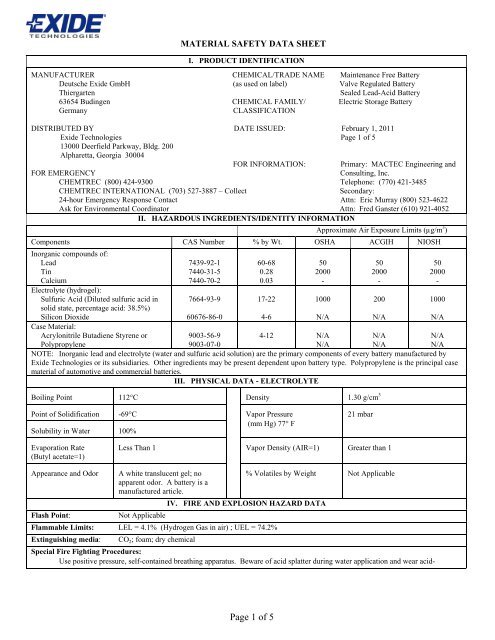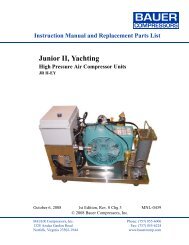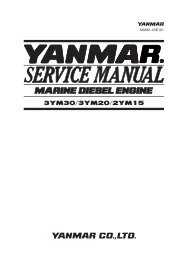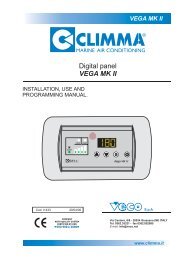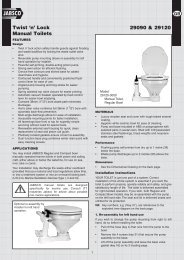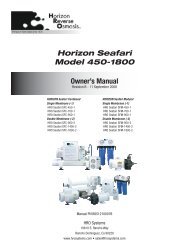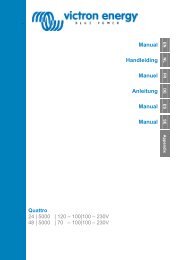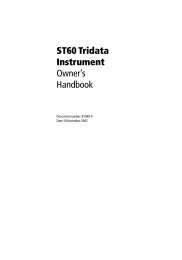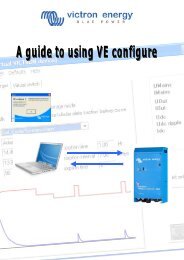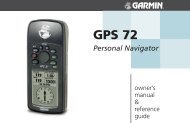Sonnenschein Exide MSDS - Zanshin
Sonnenschein Exide MSDS - Zanshin
Sonnenschein Exide MSDS - Zanshin
Create successful ePaper yourself
Turn your PDF publications into a flip-book with our unique Google optimized e-Paper software.
MATERIAL SAFETY DATA SHEET<br />
I. PRODUCT IDENTIFICATION<br />
MANUFACTURER CHEMICAL/TRADE NAME Maintenance Free Battery<br />
Deutsche <strong>Exide</strong> GmbH (as used on label) Valve Regulated Battery<br />
Thiergarten<br />
Sealed Lead-Acid Battery<br />
63654 Budingen CHEMICAL FAMILY/ Electric Storage Battery<br />
Germany<br />
CLASSIFICATION<br />
DISTRIBUTED BY DATE ISSUED: February 1, 2011<br />
<strong>Exide</strong> Technologies Page 1 of 5<br />
13000 Deerfield Parkway, Bldg. 200<br />
Alpharetta, Georgia 30004<br />
FOR INFORMATION: Primary: MACTEC Engineering and<br />
FOR EMERGENCY<br />
Consulting, Inc.<br />
CHEMTREC (800) 424-9300 Telephone: (770) 421-3485<br />
CHEMTREC INTERNATIONAL (703) 527-3887 – Collect<br />
Secondary:<br />
24-hour Emergency Response Contact Attn: Eric Murray (800) 523-4622<br />
Ask for Environmental Coordinator Attn: Fred Ganster (610) 921-4052<br />
II. HAZARDOUS INGREDIENTS/IDENTITY INFORMATION<br />
Approximate Air Exposure Limits (µg/m 3 )<br />
Components CAS Number % by Wt. OSHA ACGIH NIOSH<br />
Inorganic compounds of:<br />
Lead<br />
Tin<br />
Calcium<br />
Electrolyte (hydrogel):<br />
Sulfuric Acid (Diluted sulfuric acid in<br />
solid state, percentage acid: 38.5%)<br />
Silicon Dioxide<br />
Case Material:<br />
Acrylonitrile Butadiene Styrene or<br />
7439-92-1<br />
7440-31-5<br />
7440-70-2<br />
7664-93-9<br />
60676-86-0<br />
9003-56-9<br />
4-12 N/A<br />
N/A<br />
N/A<br />
Polypropylene<br />
9003-07-0<br />
N/A<br />
N/A<br />
N/A<br />
NOTE: Inorganic lead and electrolyte (water and sulfuric acid solution) are the primary components of every battery manufactured by<br />
<strong>Exide</strong> Technologies or its subsidiaries. Other ingredients may be present dependent upon battery type. Polypropylene is the principal case<br />
material of automotive and commercial batteries.<br />
III. PHYSICAL DATA - ELECTROLYTE<br />
60-68<br />
0.28<br />
0.03<br />
17-22<br />
4-6<br />
50<br />
2000<br />
-<br />
Boiling Point 112°C Density 1.30 g/cm 3<br />
1000<br />
N/A<br />
50<br />
2000<br />
-<br />
200<br />
N/A<br />
50<br />
2000<br />
-<br />
1000<br />
N/A<br />
Point of Solidification<br />
-69°C<br />
Solubility in Water 100%<br />
Vapor Pressure<br />
(mm Hg) 77° F<br />
21 mbar<br />
Evaporation Rate<br />
(Butyl acetate=1)<br />
Less Than 1 Vapor Density (AIR=1) Greater than 1<br />
Appearance and Odor A white translucent gel; no<br />
% Volatiles by Weight Not Applicable<br />
apparent odor. A battery is a<br />
manufactured article.<br />
IV. FIRE AND EXPLOSION HAZARD DATA<br />
Flash Point:<br />
Not Applicable<br />
Flammable Limits: LEL = 4.1% (Hydrogen Gas in air) ; UEL = 74.2%<br />
Extinguishing media: CO 2 ; foam; dry chemical<br />
Special Fire Fighting Procedures:<br />
Use positive pressure, self-contained breathing apparatus. Beware of acid splatter during water application and wear acid-<br />
Page 1 of 5
IV. FIRE AND EXPLOSION HAZARD DATA (CONTINUED)<br />
resistant clothing, gloves, face and eye protection. If batteries are on charge, shut off power to the charging equipment, but, note<br />
that strings of series connected batteries may still pose risk of electric shock even when charging equipment is shut down.<br />
Unusual Fire and Explosion Hazards:<br />
In operation, batteries generate and release flammable hydrogen gas. They must always be assumed to contain this gas which, if<br />
ignited by burning cigarette, naked flame or spark, may cause battery explosion with dispersion of casing fragments and<br />
corrosive liquid electrolyte. Carefully follow manufacturer's instructions for installation and service. Keep away all sources of<br />
gas ignition and do not allow metallic articles to simultaneously contact the negative and positive terminals of a battery.<br />
V. REACTIVITY DATA<br />
Stability: Stable X<br />
Unstable<br />
Conditions to Avoid: Prolonged overcharge at high current; sources of ignition.<br />
Incompatibility: (materials to avoid)<br />
Electrolyte (Water and Sulfuric Acid Solution): Contact with combustibles and organic materials may cause fire and explosion.<br />
Also reacts violently with strong reducing agents, metals, sulfur trioxide gas, strong oxidizers, and water. Contact with metals<br />
may produce toxic sulfur dioxide fumes and may release flammable hydrogen gas.<br />
Lead compounds: Avoid contact with strong acids, bases, halides, halogenates, potassium nitrate, permanganate, peroxides,<br />
nascent hydrogen, and reducing agents.<br />
Hazardous Decomposition Products:<br />
Electrolyte: Sulfur trioxide, carbon monoxide, sulfuric acid mist, sulfur dioxide, hydrogen sulfide.<br />
Lead compounds: Temperatures above the melting point are likely to produce toxic metal fume, vapor, or dust; contact with<br />
strong acid or base or presence of nascent hydrogen may generate highly toxic arsine gas.<br />
VI. HEALTH HAZARD DATA<br />
Routes of Entry:<br />
Electrolyte: Harmful by all routes of entry.<br />
Lead compounds: Hazardous exposure can occur only when product is heated above the melting point, oxidized or otherwise<br />
processed or damaged to create dust, vapor, or fume.<br />
Inhalation:<br />
Electrolyte: Breathing of sulfuric acid vapors or mists may cause severe respiratory irritation.<br />
Lead compounds: Inhalation of lead dust or fumes may cause irritation of upper respiratory tract and lungs.<br />
Ingestion:<br />
Electrolyte: May cause severe irritation of mouth, throat, esophagus, and stomach.<br />
Lead compounds: Acute ingestion may cause abdominal pain, nausea, vomiting, diarrhea, and severe cramping. This may lead<br />
rapidly to systemic toxicity.<br />
Skin Contact:<br />
Electrolyte: Severe irritation, burns, and ulceration.<br />
Lead compounds: Not absorbed through the skin.<br />
Eye Contact:<br />
Electrolyte: Severe irritation, burns, cornea damage, blindness.<br />
Lead compounds: May cause eye irritation.<br />
Effects of Overexposure - Acute:<br />
Electrolyte: Severe skin irritation, damage to cornea may cause blindness, upper respiratory irritation.<br />
Lead compounds: Symptoms of toxicity include headache, fatigue, abdominal pain, loss of appetite, muscular aches and<br />
weakness, sleep disturbances, and irritability.<br />
Page 2 of 5
VI. HEALTH HAZARD DATA (CONTINUED)<br />
Effects of Overexposure - Chronic:<br />
Electrolyte: Possible erosion of tooth enamel; inflammation of nose, throat, and bronchial tubes.<br />
Lead compounds: Anemia; neuropathy, particularly of the motor nerves, with wrist drop; kidney damage; reproductive changes<br />
in both males and females.<br />
Carcinogenicity:<br />
Electrolyte: The National Toxicology Program (NTP) and the International Agency for Research on Cancer (IARC) have<br />
classified "strong inorganic acid mist containing sulfuric acid" as a Category I carcinogen, a substance that is carcinogenic to<br />
humans. This classification does not apply to sulfuric acid solutions in static liquid state or to electrolyte in batteries. Batteries<br />
subjected to abusive charging at excessively high currents for prolonged periods of time without vent caps in place may create a<br />
surrounding atmosphere of the offensive strong inorganic acid mist containing sulfuric acid.<br />
Lead compounds: Listed as a 2B carcinogen, likely in animals at extreme doses. Proof of carcinogenicity in humans is lacking<br />
at present.<br />
Medical Conditions Generally Aggravated by Exposure:<br />
Overexposure to sulfuric acid mist may cause lung damage and aggravate pulmonary conditions. Contact of electrolyte (water<br />
and sulfuric acid solution) with skin may aggravate skin diseases such as eczema and contact dermatitis. Contact of electrolyte<br />
(water and sulfuric acid solution) with eyes may damage cornea and/or cause blindness. Lead and its compounds can aggravate<br />
some forms of kidney, liver, and neurologic diseases.<br />
Emergency and First Aid Procedures:<br />
Inhalation:<br />
Electrolyte: Remove to fresh air immediately. If breathing is difficult, give oxygen.<br />
Lead compounds: Remove from exposure, gargle, wash nose and lips; consult physician.<br />
Ingestion:<br />
Electrolyte: Give large quantities of water; do not induce vomiting; consult physician.<br />
Lead compounds: Consult physician immediately.<br />
Skin:<br />
Eyes:<br />
Electrolyte: Flush with large amounts of water for at least 15 minutes; remove contaminated clothing completely, including<br />
shoes.<br />
Lead compounds: Wash immediately with soap and water.<br />
Electrolyte and Lead compounds: Flush immediately with large amounts of water for at least 15 minutes; consult physician<br />
immediately.<br />
VII. PRECAUTIONS FOR SAFE HANDLING AND USE<br />
Handling and Storage: (No hazards under normal usage as the sulfuric acid is immobilized in a gel structure)<br />
Store batteries under roof in cool, dry, well-ventilated areas that are separated from incompatible materials and from activities<br />
which may create flames, sparks, or heat. Keep away from metallic objects that could bridge the terminals on a battery and<br />
create a dangerous short-circuit. Single batteries pose no risk of electric shock but there may be increasing risk of electric shock<br />
from strings of connected batteries exceeding three 12-volt units.<br />
Charging:<br />
There is a possible risk of electric shock from charging equipment and from strings of series connected batteries, whether or not<br />
being charged. Shut-off power to chargers whenever not in use and before detachment of any circuit connections. Batteries<br />
being charged will generate and release flammable hydrogen gas. Charging space should be ventilated. Keep battery vent caps<br />
in position. Prohibit smoking and avoid creation of flames and sparks nearby. Wear face and eye protection when near batteries<br />
being charged.<br />
Spill or Leak Procedures:<br />
Stop flow of material, contain/absorb small spills with dry sand, earth, and vermiculite. Do not use combustible materials. If<br />
possible, carefully neutralize spilled electrolyte with soda ash, sodium bicarbonate, lime, etc. Wear acid-resistant clothing, boots,<br />
gloves, and face shield. Do not allow discharge of un-neutralized acid to sewer. Neutralized acid must be managed in<br />
accordance with approved local, state, and federal requirements. Consult state environmental agency and/or federal EPA.<br />
Page 3 of 5
VII. PRECAUTIONS FOR SAFE HANDLING AND USE (CONTINUED)<br />
Waste Disposal Methods:<br />
Spent batteries: Send to secondary lead smelter for recycling.<br />
Electrolyte: Place neutralized slurry into sealed acid resistant containers and dispose of as hazardous waste, as applicable. Large<br />
water-diluted spills, after neutralization and testing, should be managed in accordance with approved local, state, and federal<br />
requirements. Consult state environmental agency and/or federal EPA.<br />
Precautionary Labeling:<br />
POISON - CAUSES SEVERE BURNS<br />
DANGER - EXPLOSIVE GASES<br />
CORROSIVE - CONTAINS SULFURIC ACID<br />
KEEP AWAY FROM CHILDREN<br />
VIII. CONTROL MEASURES<br />
Engineering Controls and Work Practices:<br />
Store and handle in well-ventilated area. If mechanical ventilation is used, components must be acid-resistant.<br />
Handle batteries cautiously. Make certain vent caps are on securely. If battery case is damaged, avoid bodily contact with<br />
internal components. Wear protective clothing, eye and face protection, when charging or handling batteries.<br />
Respiratory Protection:<br />
None required under normal conditions. When concentrations of sulfuric acid mist are known to exceed PEL, use NIOSH or<br />
MSHA-approved respiratory protection.<br />
Protective gloves:<br />
None required under normal conditions. If battery case is damaged, rubber or plastic acid-resistant gloves with elbow-length<br />
gauntlet.<br />
Eye Protection:<br />
None required under normal conditions. If battery case is damaged, chemical goggles or face shield.<br />
Other Protection:<br />
Under severe exposure or emergency conditions, wear acid-resistant clothing, gloves, and boots.<br />
Emergency Flushing:<br />
In areas where water and sulfuric acid solutions are handled in concentrations greater than 1%, emergency eyewash stations and<br />
showers should be provided, with unlimited water supply.<br />
IX. OTHER REGULATORY INFORMATION<br />
NFPA Hazard Rating for sulfuric acid:<br />
Flammability (Red) = 0<br />
Health (Blue) = 3<br />
Reactivity (Yellow) = 2<br />
Sulfuric acid is water-reactive if concentrated.<br />
TRANSPORTATION:<br />
<strong>Sonnenschein</strong> batteries meet test specifications for “non-spillable electric storage batteries”, as required by D.O.T., 49 CFR 173.159(d),<br />
and IMO/IMDG, and ICAO/IATA packing instruction 806 and note A67; therefore, are non-regulated when protected against short<br />
circuits, kept upright, and securely packaged.<br />
The battery and the outer packaging must be plainly and durably marked “NONSPILLABLE” or “NONSPILLABLE BATTERY”.<br />
RCRA: Spent lead-acid batteries are not regulated as hazardous waste when recycled. Spilled sulfuric acid is a characteristic hazardous<br />
waste; EPA hazardous waste number D002 (corrosivity).<br />
CERCLA (Superfund) and EPCRA:<br />
(a) Reportable Quantity (RQ) for spilled 100% sulfuric acid under CERCLA (Superfund) and EPCRA (Emergency Planning and<br />
Community Right to Know Act) is 1,000 lbs. State and local reportable quantities for spilled sulfuric acid may vary.<br />
(b) Sulfuric acid is a listed "Extremely Hazardous Substance" under EPCRA, with a Threshold Planning Quantity (TPQ) of 1,000<br />
lbs.<br />
Page 4 of 5
IX. OTHER REGULATORY INFORMATION (CONTINUED)<br />
(c) EPCRA Section 302 notification is required if 1,000 lbs or more of sulfuric acid is present at one site. An average<br />
automotive/commercial battery contains approximately 5 lbs. of sulfuric acid. Contact your <strong>Exide</strong> representative for additional<br />
information.<br />
(d) EPCRA Section 312 Tier Two reporting is required for non-automotive batteries if sulfuric acid is present in quantities of 500<br />
lbs or more and/or if lead is present in quantities of 10,000 lbs or more.<br />
(e) Supplier Notification: This product contains toxic chemicals that may be reportable under EPCRA Section 313 Toxic Chemical<br />
Release Inventory (Form R) requirements. For a manufacturing facility under SIC codes 20 through 39, the following<br />
information is provided to enable you to complete the required reports:<br />
Approximate<br />
Toxic Chemical CAS Number % by Weight<br />
Lead 7439-92-1 60-68<br />
Sulfuric Acid/Water Solution 7664-93-9 17-22<br />
If you distribute this product to other manufacturers in SIC Codes 20 through 39, this information must be provided with the first shipment<br />
of each calendar year.<br />
Note: The Section 313 supplier notification requirement does not apply to batteries that are "consumer products".<br />
CAA:<br />
<strong>Exide</strong> Technologies supports preventative actions concerning ozone depletion in the atmosphere due to emissions of CFC's and other<br />
ozone depleting chemicals (ODC's), defined by the USEPA as Class I substances. Pursuant to Section 611 of the Clean Air Act<br />
Amendments (CAAA) of 1990, finalized on January 19, 1993, <strong>Exide</strong> established a policy to eliminate the use of Class I ODC's prior to the<br />
May 15, 1993 deadline.<br />
TSCA:<br />
Ingredients in <strong>Exide</strong>'s batteries are listed in the TSCA Registry as follows:<br />
CAS NO.<br />
TSCA Status<br />
Electrolyte<br />
Sulfuric acid (H 2 SO 4 ) 7664-93-9 Listed<br />
Inorganic Lead Compound<br />
Lead (Pb) 7439-92-1 Listed<br />
Lead Oxide (PbO) 1317-36-8 Listed<br />
Lead Sulfate (PbSO 4 ) 7446-14-2 Listed<br />
Calcium (Ca) 7440-70-2 Listed<br />
Tin (Sn) 7440-31-5 Listed<br />
CANADIAN REGULATIONS:<br />
All chemical substances in this product are listed on the CEPA DSL/NDSL or are exempt from list requirements.<br />
CALIFORNIA PROPOSITION 65: "WARNING: This product contains lead, a chemical known to the State of California to cause<br />
cancer, or birth defects or other reproductive harm."<br />
PREPARED BY: ENVIRONMENTAL, SAFETY AND HEALTH DEPARTMENT<br />
EXIDE TECHNOLOGIES<br />
13000 DEERFIELD PKWY., BLDG. 200<br />
MILTON, GA 30004<br />
VENDEE AND THIRD PERSONS ASSUME THE RISK OF INJURY PROXIMATELY CAUSED BY THE MATERIAL IF<br />
REASONABLE SAFETY PROCEDURES ARE NOT FOLLOWED AS PROVIDED FOR IN THE DATA SHEET, AND VENDOR<br />
SHALL NOT BE LIABLE FOR INJURY TO VENDEE OR THIRD PERSONS PROXIMATELY CAUSED BY ABNORMAL USE OF<br />
THE MATERIAL EVEN IF REASONABLE PROCEDURES ARE FOLLOWED.<br />
ALL PERSONS USING THIS PRODUCT, ALL PERSONS WORKING IN AN AREA WHERE THIS PRODUCT IS USED, AND ALL<br />
PERSONS HANDLING THIS PRODUCT SHOULD BE FAMILIAR WITH THE CONTENTS OF THIS DATA SHEET. THIS<br />
INFORMATION SHOULD BE EFFECTIVELY COMMUNICATED TO EMPLOYEES AND OTHERS WHO MIGHT COME IN<br />
CONTACT WITH THE PRODUCT.<br />
WHILE THE INFORMATION ACCUMULATED AND SET FORTH HEREIN IS BELIEVED TO BE ACCURATE AS OF THE<br />
DATE HEREOF, EXIDE TECHNOLOGIES MAKES NO WARRANTY WITH RESPECT THERETO AND DISCLAIMS ALL<br />
LIABILITY FROM RELIANCE THEREON. RECIPIENTS ARE ADVISED TO CONFIRM IN ADVANCE OF NEED THAT THE<br />
INFORMATION IS CURRENT, APPLICABLE, AND SUITABLE FOR THEIR PARTICULAR CIRCUMSTANCES.<br />
ANY PHOTOCOPY MUST BE OF THIS ENTIRE DOCUMENT<br />
Page 5 of 5


